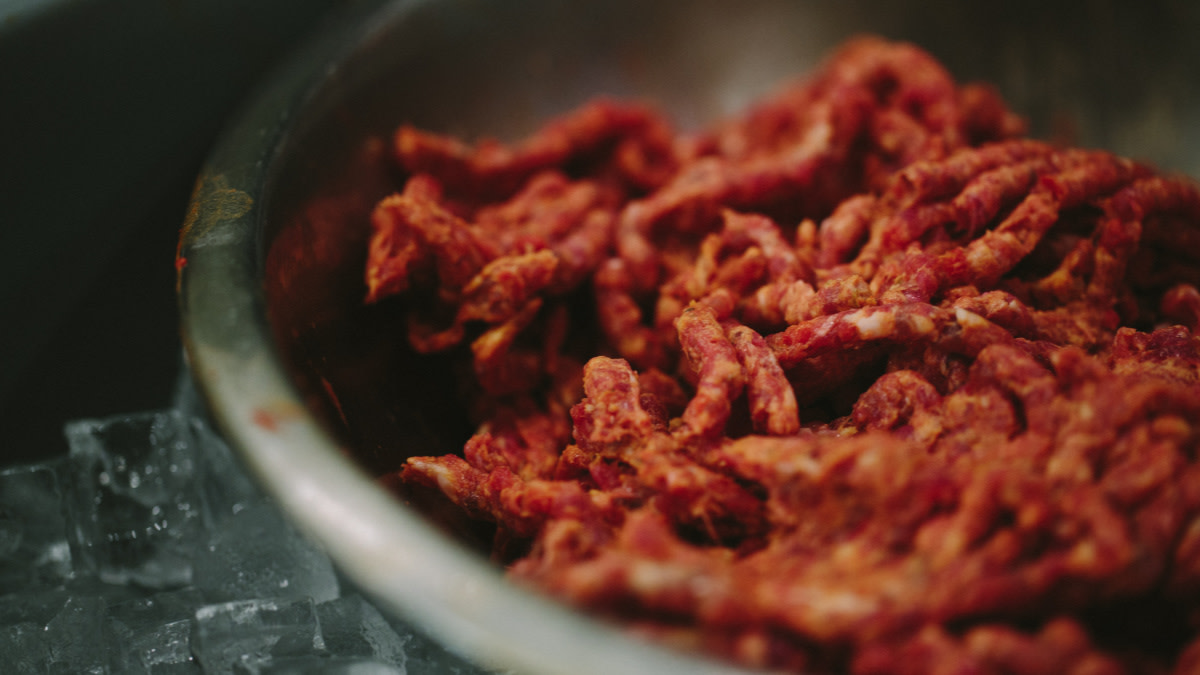
There are a lot of benefits to grinding your wild game at home rather than taking it to a processor. The obvious reason is having control over the entire process, knowing that only your hands touched your food. You also get to make decisions about how much fat you want to add and what seasonings you want to use in your sausage. Plus, if done correctly, home-ground meat will have a better texture, which makes a huge difference at the dinner table.
If you’re new to the process and feel intimated, follow my guidelines below. You’ll be well on your way to successful grinding in no time.
First, it’s important to know that you don’t have to grind all the meat at the same time you process the animal. In fact, I prefer not to so that I have plenty of time to appropriately chill the meat in the freezer.
It is imperative to process an animal promptly once you get home. This can be quite laborious, but something that will make it easier on the front end is freezing portions of meat destined for burger or sausage.
When processing, I cube tough cuts of meat into 2-inch pieces and vacuum seal them in small, 2-pound portions. I keep these packages laid out flat in the freezer until I’m ready to grind and cook the meat. I transfer them to the fridge the night before, and by morning they are half defrosted—the ideal condition for grinding.
I usually grind in small batches for individual meals, since I’ve found that ground meat that’s been frozen is mushier than fresh ground. Of course, you can also pick a day to grind and package all your extra meat from a season and knock it out all at once. There are drawbacks and benefits to either approach.
Whether you decide to grind small portions or large batches, just remember that temperature is the most crucial aspect of grinding meat. Both meat and fat have to be very cold or partially frozen. You don’t want it rock solid in a block, but it should be icy in the middle.
In addition to partially freezing the meat, I place the grinder tray, auger, blade and plate in the freezer 30 minutes ahead of time. As you push meat through the feeding tube, have a bowl sitting in an ice bath to catch the meat and keep it chilled.
The importance on temperature control has to do with smearing. The spinning blades that cut the meat create friction. This heat causes the fat to melt and render, making the meat come out mushy on the other end. You want to avoid this texture at all costs by extruding the meat in separate, uniform strands. If at any point it begins to smear while grinding, pause and chill the cubed pieces in the freezer before proceeding.
Most grinders come with a few plates for different grind sizes. A basic set should have a small, medium and large die. You will want to use the fine die when making sausages. The medium or large plates are perfect if you want coarse ground meat for recipes like chili.
If you cut your meat into huge chunks you may need to do a double grind starting with the large or medium plate and finish with the small. It’s a good idea to toss the meat back in the freezer for 10-15 minutes in between the grinds so it stays cold.
Knowing which type of fat to use and how much of it is also important. Pork fatback, the white fat that comes off the back of a pig, is most common. It’s the preferred choice if you want to avoid an overwhelming pork flavor. If you use a fat that contains meat, such as the belly, it will taste more like pork and less like wild game.
The rule of thumb on adding fat when grinding is to use between 10 and 15 percent for burger and 20 percent or higher for sausage. However, there are plenty of cases where I don’t add any fat at all for a healthier option. One example is cooking 100 percent ground venison in coconut oil for my Thai venison lettuce cups.
If you plan to season the meat for sausage or chorizo, you will want to do this after the first grind. Mixing the spices in with the ground meat helps to make the meat bind for stuffing.
If I plan to make sausage, I make a big batch of ground meat and portion out a pound or two into individual bowls. I season each one differently because I like a wide variety of flavors. At this point, I can stuff them into casings or keep loose for breakfast sausage or hash.
The options for ground meat or sausage are endless. You can avoid the cooking rut by branching out with more adventurous recipes, or maybe just enjoy the tried and true cheeseburger.







Conversation